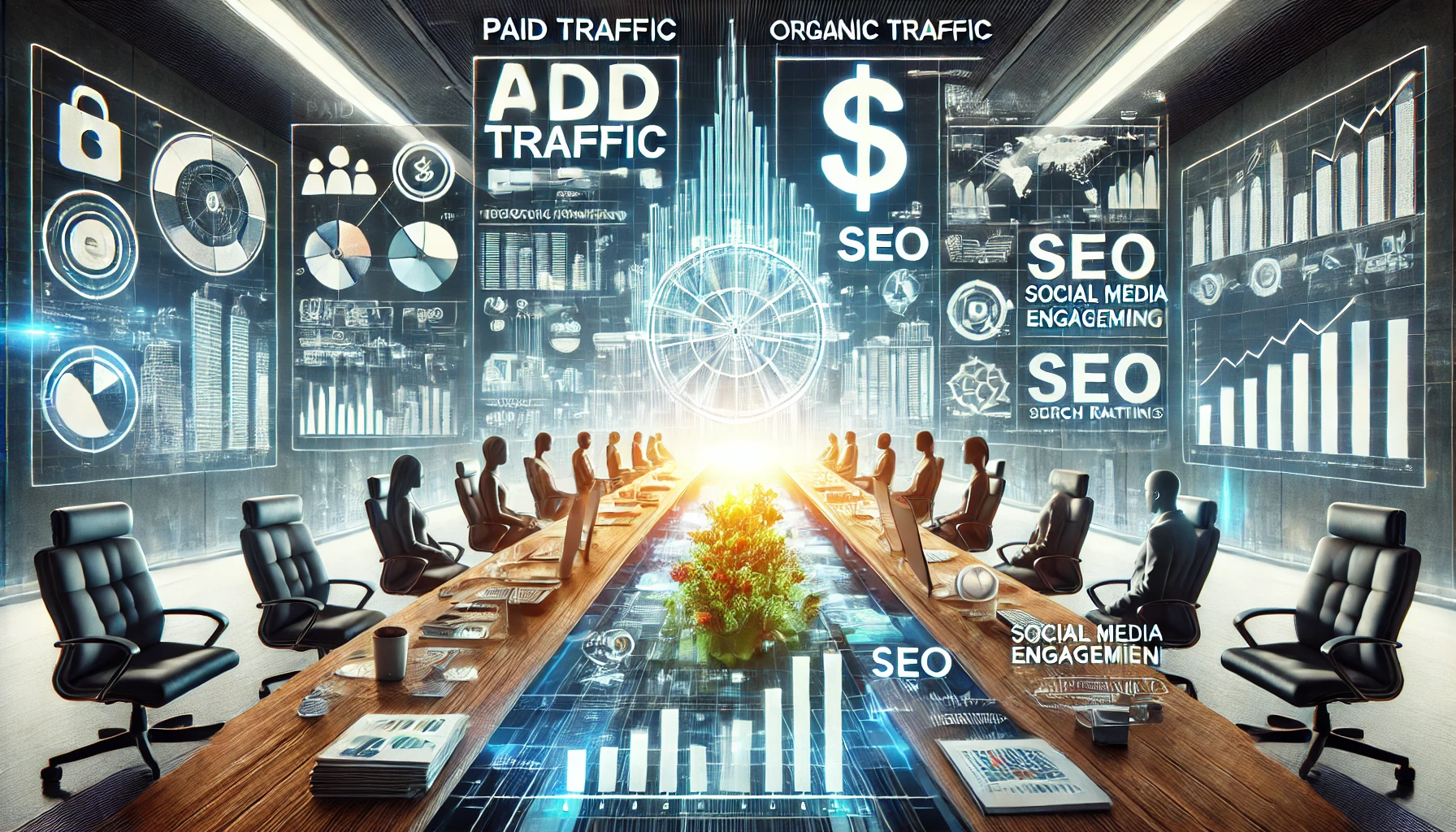Introduction
When it comes to driving visitors to a website, businesses have two primary options: paid traffic and organic traffic. Each method has its advantages and challenges, making it crucial to understand which one aligns best with your business goals.
In this article, we will compare paid traffic and organic traffic, highlighting their differences, benefits, and when to use each strategy.
What is Paid Traffic?
Paid traffic refers to visitors who arrive at a website through paid advertisements. Businesses invest money in platforms like Google Ads, Facebook Ads, Instagram Ads, TikTok Ads, and LinkedIn Ads to display targeted advertisements to potential customers.
Advantages of Paid Traffic
✅ Immediate Results – Unlike organic traffic, paid ads can bring visitors instantly.
✅ Precise Targeting – You can target specific demographics, interests, locations, and behaviors.
✅ Scalability – Businesses can scale up or down based on budget and performance.
✅ Better Tracking and Analytics – Platforms provide detailed insights into ad performance.
Challenges of Paid Traffic
❌ Requires a Budget – Paid campaigns can be expensive, especially in competitive industries.
❌ Short-Term Impact – Traffic stops as soon as the ads are turned off.
❌ Ad Fatigue – Users may become desensitized to repetitive ads over time.
What is Organic Traffic?
Organic traffic consists of visitors who reach a website naturally through search engines, social media, or referrals, without the influence of paid ads. The most common sources of organic traffic are:
- Search Engine Optimization (SEO) – Optimizing content to rank higher in Google search results.
- Social Media Engagement – Growing followers and engagement on platforms like Instagram, Facebook, and LinkedIn.
- Content Marketing – Publishing valuable blogs, videos, and infographics that attract visitors.
Advantages of Organic Traffic
✅ Cost-Effective in the Long Run – No direct payment for clicks or visits.
✅ Sustainable Growth – Quality content can attract visitors for months or even years.
✅ Higher Credibility and Trust – Users tend to trust organic search results more than paid ads.
Challenges of Organic Traffic
❌ Takes Time to Build – SEO and content marketing require patience before results appear.
❌ Algorithm Changes – Google and social media algorithms frequently change, impacting reach.
❌ High Competition – Ranking for competitive keywords can be challenging.
Paid Traffic vs. Organic Traffic: Key Differences
| Feature | Paid Traffic | Organic Traffic |
|---|---|---|
| Speed | Instant results | Takes time to build |
| Cost | Requires continuous investment | Free but requires effort |
| Scalability | Easy to scale with budget | Limited by SEO strategies |
| Sustainability | Stops when ads stop | Long-term value |
| Credibility | Users may see as promotional | More trusted by users |
When to Use Paid Traffic
- For Quick Results: If you need immediate website traffic, paid ads are the best option.
- For Product Launches: Running ads can help promote new products or services quickly.
- For Lead Generation: Paid campaigns can be optimized for collecting leads through landing pages.
- For Testing Strategies: A/B testing different audiences and messaging is easier with paid ads.
When to Focus on Organic Traffic
- For Long-Term Growth: SEO and content marketing build lasting website authority.
- For Building Trust and Brand Awareness: Users often trust organic content more than ads.
- For Reducing Costs Over Time: Once content ranks well, it continues to generate traffic for free.
The Best Approach: A Balanced Strategy
Instead of choosing between paid and organic traffic, businesses should combine both strategies:
✅ Start with Paid Traffic to get immediate results.
✅ Invest in Organic Traffic to build a long-term audience.
✅ Use Paid Traffic to Promote Organic Content such as blog posts and videos.
Conclusion: Which One Should You Choose?
The choice between paid and organic traffic depends on your business goals, budget, and timeline. While paid traffic provides instant visibility, organic traffic ensures long-term success. A balanced approach that integrates both strategies is the key to sustainable growth.
